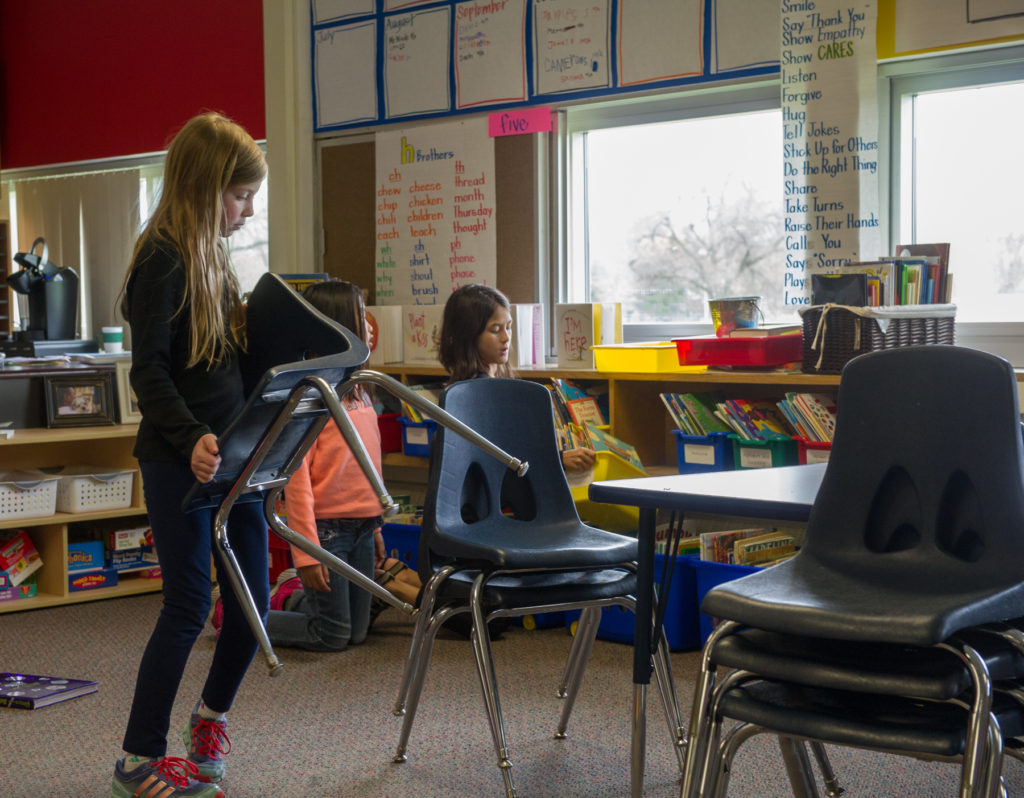

Interactive Modeling is the strategy that a fifth grade teacher I met recently is going to try. She’s been wrestling for a while with arranging her classroom to accommodate a whole group circle and also with making sure that students can see the interactive whiteboard that’s been installed in an inconvenient, odd spot in her room. As is true for many teachers, her room is very small. In the past, she’s asked students to move desks and chairs so they could make a circle or see the board, but they had done so in ways she found both inefficient and unsafe.
This summer she had a revelation. She realized that rather than assuming, as she always had, that fifth grade students knew how to move furniture quickly and safely, she could use Interactive Modeling to ensure that they did.
Specifically, she plans to arrange her desks and chairs so that students can easily move some of them back to form a circle when needed. She will use Interactive Modeling to teach exactly how this movement of desks should look, so her students will know how to rearrange the room safely and efficiently. She also decided to use Interactive Modeling to teach students whose seats face away from the interactive whiteboard to move their chairs quickly and quietly to have a better view.
Interactive Modeling is not the solution to every challenge in the classroom, but when it comes to routines, transitions, and procedures, it is often a good place to start. It works because it makes no assumptions about what children can or should know how to do, but instead makes our expectations clear and explicit. The steps in an Interactive Modeling lesson help students notice for themselves the details of how a behavior looks and sounds. Students also have opportunities to practice and receive teacher feedback as they learn. This powerful combination of noticing and practice enables students to engage more deeply with their learning and remember more.
Margaret Berry Wilson is the author of several books, including: The Language of Learning, Doing Science in Morning Meeting (co-authored with Lara Webb), Interactive Modeling, and Teasing, Tattling, Defiance & More.